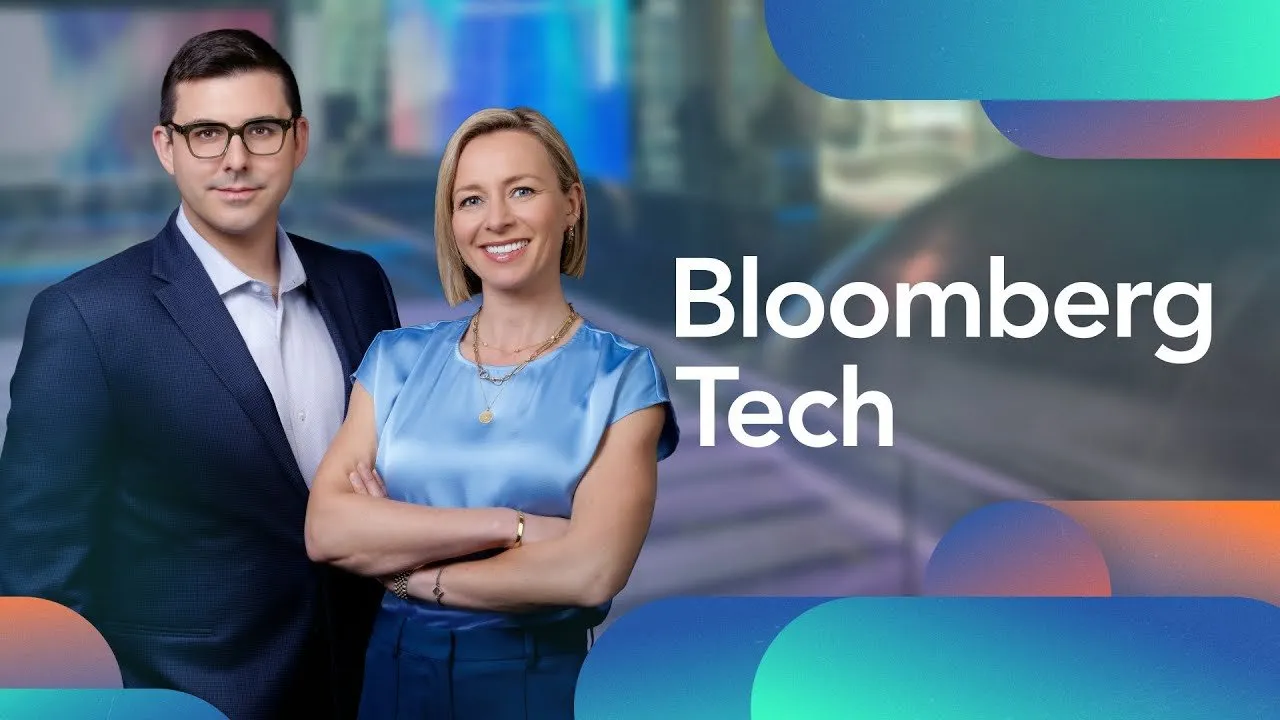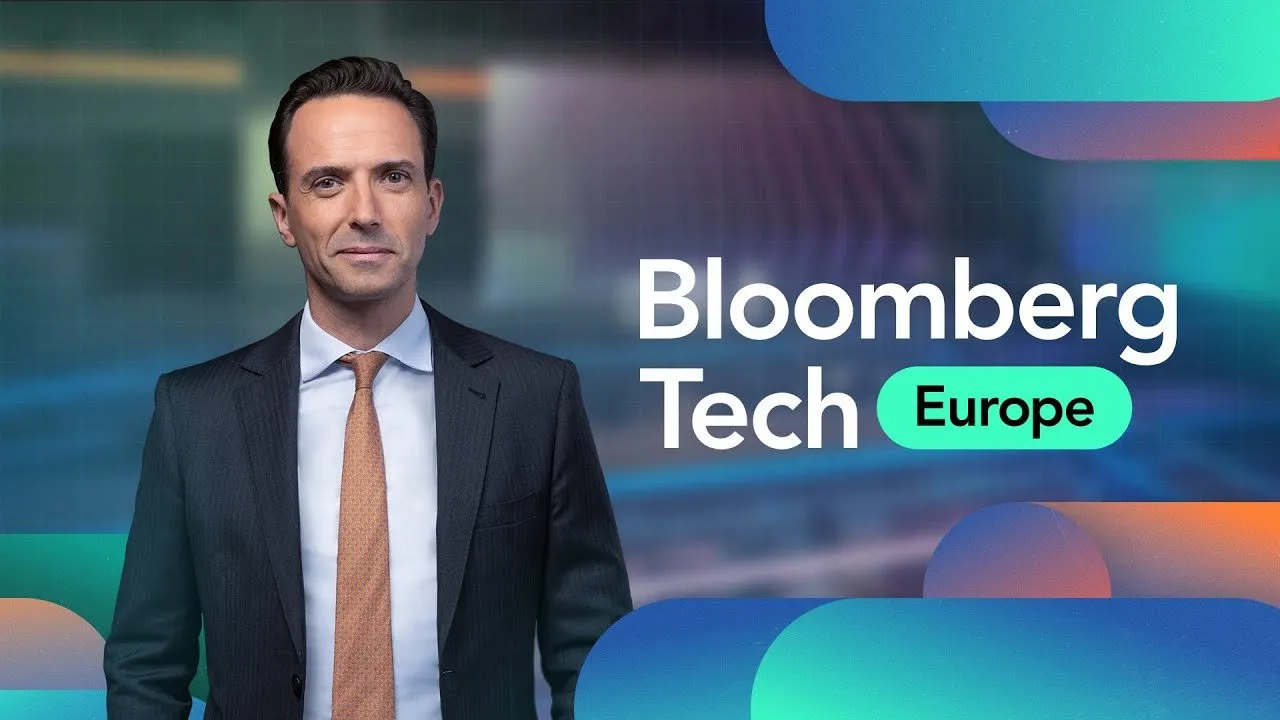Table of Contents
Watershed co-founder Taylor Francis shares how watching Al Gore's "An Inconvenient Truth" at 13 sparked a lifetime climate mission, why leaving Stripe to start a climate company required solving massive data challenges, and how three co-founders successfully run a company together without hierarchy.
Watershed co-founder Taylor Francis discusses building the world's most valuable climate software company, from his teenage years giving Al Gore presentations to high schools, through his time at Stripe, to creating enterprise software that helps companies measure and reduce their carbon emissions across complex global supply chains.
Key Takeaways
- Taylor was inspired to work on climate at age 13 after watching "An Inconvenient Truth," spending his high school years giving Al Gore presentations to mandatory school assemblies across California
- Watershed helps companies "x-ray" their business to measure carbon emissions across operations, supply chains, and vendors, then operationalize reduction strategies through redesigned policies and clean energy procurement
- The company's first customer was Sweetgreen, signed on December 23rd, 2020, after Taylor pitched sustainability conferences with a product idea that was only days old
- Three co-founders (Taylor, Avi Itskovich, and Christian Anderson) deliberately designed a non-hierarchical structure where they remain "interchangeable" for strategic decisions through shared context and obsession with ground truth
- Moving fast in climate tech requires solving complex data problems—Watershed acquired climate scientist Sangyan Su's company Vital Metrics to build the "climate data engine" that can measure emissions across any industry or geography
- The company represents 479 million tons of CO2 across all customers (nearly 1% of global emissions), demonstrating the scale needed to achieve their goal of 500 million tons reduced or removed by 2030
- John Doerr and Mike Moritz co-led their Series A—the first time the legendary investors had done a deal together since Google—after relationships built through Stripe and Al Gore's Climate Reality Project
- Watershed operates with five core principles including "customer obsession" and being at the "intersection of intensity and care"—hiring people who are outcomes-driven but also empathetic and kind
Timeline Overview
- 01:02–06:40 — Magnetic Climate Mission: How Watershed attracts exceptional talent through ambitious climate goals, the gravitational force of solving meaningful problems, and Patrick Collison's insight about hard companies being easier to build than easy ones
- 06:40–08:40 — Enterprise Sustainability Platform: Watershed's three-step process of measuring carbon emissions, providing investor-grade reporting, and operationalizing sustainability across business operations, supply chains, and energy procurement
- 08:40–11:04 — Sweetgreen as First Customer: The December 23rd, 2020 meeting in LA that secured Watershed's first enterprise client, after pitching sustainability conferences with a product concept that was only days old
- 11:04–16:36 — Reflecting on Early Days vs Today: Taylor's daily journaling practice showing the evolution from manual spreadsheets to sophisticated software, and why founders romanticize the "golden age" that was actually much harder
- 16:36–18:53 — Al Gore and An Inconvenient Truth: How watching the documentary at age 13 created a "generational call to arms," leading Taylor to join Gore's Climate Reality Project training as the youngest presenter
- 18:53–22:16 — Mobilizing Teenagers Through Schools: Taylor's high school years giving climate presentations to mandatory assemblies, solving the "marketing problem" by partnering with schools for captive audiences, and eventually speaking in China
- 22:16–27:04 — Origins of Watershed Concept: The September 2020 whiteboard session with three co-founders setting a 500-megaton CO2 reduction goal, evaluating different climate impact approaches, and choosing B2B decarbonization as the fastest path
- 27:04–31:41 — Leaving Stripe and Customer Validation: Quitting successful Stripe careers to focus full-time on climate, prioritizing paying customers as validation over fundraising, and the magical feeling of early sales deals closing
- 31:41–33:06 — Three Co-Founder Dynamics: Designing principles for running the company together as "interchangeable" partners, creating DRI (Directly Responsible Individual) culture, and maintaining non-hierarchical decision-making
- 33:06–35:25 — Shared Context Through Ground Truth: How three co-founders maintain alignment by obsessing over "coal face" customer interactions, the challenge of preserving this as the company scales from 3 to 300 people
- 35:25–38:22 — Crossing the Dunbar Number: The transition from everyone knowing everyone's name to requiring intentional culture work, investing in internal communications systems, and the moment culture becomes critical with closed-door meetings
- 38:22–41:56 — Operating Principles and Intensity: Watershed's five core values including customer obsession and the "intersection of intensity and care," hiring for outcomes-driven people who are also empathetic and kind
- 41:56–47:37 — Personal Priorities and Sacrifice: How the founders share personal priorities with the team to create accountability, rejecting the "founder woe is me" narrative while acknowledging the intentional choices required
- 47:37–50:26 — Board Pressure to Move Faster: John Doerr and Mike Moritz's feedback that crushing revenue goals with one salesperson indicated under-execution, pushing the team to scale operations to match market demand
- 50:26–52:21 — Market Timing and Regulatory Tailwinds: How SEC climate disclosure rules, BlackRock mandates, and European regulations are creating the "all at once" phase of climate economy deployment
- 52:21–58:08 — Solving the Data Topology Problem: The complexity of measuring emissions across different verticals, acquiring Vital Metrics and climate scientist Sangyan Su to build the core "climate data engine"
- 58:08–END — Current Hiring and Future Vision: Watershed's continued hiring across engineering, sales, climate science, and policy roles in the US and Europe to capture the massive market opportunity
The Magnetic Power of Climate Mission
Taylor Francis discovered early that ambitious climate goals create a gravitational force for attracting exceptional talent that money and equity alone cannot replicate. Watershed's mission to remove or reduce 500 million tons of CO2 annually by 2030—equivalent to Germany, Australia, or France—provides the kind of compelling challenge that motivates people to join and stay committed through difficult periods.
This aligns with Patrick Collison's insight from Stripe that it's counterintuitively easier to build hard companies than easy ones. The steeper the climb and more ambitious the goal, the more compelling it becomes to exceptional people who want their daily work to matter beyond personal financial gain.
The mission creates a unique energy boost that sustains teams through the inevitable grinding daily work of building enterprise software. While Monday through Friday involves the same challenging work as any software company—writing code, calling customers, having difficult management conversations—Friday evening provides renewed energy from knowing the work could genuinely matter for humanity's biggest challenge.
- Watershed's 500-megaton CO2 goal creates national-scale impact that attracts mission-driven talent beyond traditional compensation incentives
- Ambitious climate goals provide emotional energy that sustains teams through difficult periods and grinding daily work
- The intersection of meaningful mission with sophisticated technology challenges appeals to people who want both impact and intellectual stimulation
- Customer examples like their CRO Dan Miller-Smith joining inbound through LinkedIn demonstrate the authentic pull of climate mission
This approach proves that in certain categories, particularly those addressing existential challenges, mission alignment can be the primary differentiator in talent acquisition and retention.
The Three-Step Enterprise Sustainability Platform
Watershed's product addresses the fundamental challenge that companies are blind to carbon emissions sources across their operations and supply chains. The platform provides three sequential capabilities: measurement, reporting, and operationalization of sustainability initiatives across enterprise organizations.
Step one involves "x-raying" businesses to measure carbon emissions from all sources—business travel, energy consumption, vendor purchases, supply chain operations. This requires sophisticated data collection and analysis across complex global operations that most companies cannot track internally.
Step two provides investor-grade and regulator-grade reporting as sustainability data becomes as important as financial data for large companies. European regulations already require carbon emissions reporting in annual reports, with similar requirements expanding globally.
Step three enables operational changes through redesigned travel policies, supply chain modifications, clean energy procurement, and tracking reduction progress. This transforms sustainability from compliance exercise to core business operations that drive actual emission reductions.
- Companies need to "x-ray" complex global operations to identify all carbon emission sources across business travel, energy, vendors, and supply chains
- Regulatory requirements are making sustainability reporting as mandatory as financial reporting for public companies
- The platform enables operational changes like redesigned policies and clean energy procurement rather than just measurement and reporting
- Watershed aspires to become for sustainability what Salesforce is for sales teams—the core software platform for this critical business function
This comprehensive approach addresses the full lifecycle from awareness to action, creating sticky relationships with enterprise customers who need ongoing support for complex operational transformations.
The Customer-First Validation Strategy
Rather than rushing to raise venture capital, Watershed prioritized customer validation through paying clients as the ultimate test of product-market fit. Taylor and his co-founders believed no idea was good until customers paid money for it, leading them to aggressively pursue sales before formal fundraising.
The first customer acquisition story illustrates this commitment—Taylor attended a sustainability conference in Oakland with a $50 lobby ticket, pitching a product concept that was literally days old. This led to months of follow-up with Sweetgreen's supply chain team, culminating in the December 23rd meeting that became their first enterprise customer.
This approach provided crucial market validation during the emotional rollercoaster of early startup life, where founders oscillate between conviction and doubt about market opportunity. Paying customers provide the clearest signal that companies have real problems worth solving and are willing to invest in solutions.
- The team prioritized customer validation over fundraising, believing no idea was valid until customers paid for it
- Early sales efforts began with conference networking and cold outreach rather than warm investor introductions
- Paying customers provide psychological validation during the emotional uncertainty of early startup development
- The first enterprise deals create "oxygen" that sustains momentum and confirms market opportunity
This strategy proved particularly effective in the B2B sustainability market, where regulatory pressure and investor demands create genuine budget authority for climate solutions.
Non-Hierarchical Three Co-Founder Structure
Taylor, Avi Itskovich, and Christian Anderson deliberately designed a company structure where all three co-founders remain "interchangeable" for strategic decisions. This requires shared context and ownership but enables distributed leadership that can handle the complexity of scaling a fast-growing company.
The approach stems from three core principles: running the company together with interchangeable decision-making authority, maintaining DRI (Directly Responsible Individual) culture where decisions are made by people closest to the work rather than consensus, and avoiding hierarchy that privileges titles over expertise.
Shared context becomes increasingly challenging as the company scales from 3 to 300 people, requiring obsession with "ground truth" through direct customer interactions and firsthand understanding of product performance rather than summaries of summaries.
- Three co-founders designed "interchangeable" decision-making authority requiring shared context but enabling distributed leadership
- DRI culture ensures decisions are made by people closest to the work rather than through consensus or hierarchical authority
- Non-hierarchical structure avoids title-based decision-making in favor of expertise and proximity to specific challenges
- Maintaining shared context requires deliberate effort to stay connected to customer interactions and product reality
The emotional benefit involves shared weight-carrying during difficult periods, where three people provide resilience through individual energy fluctuations and mutual support during challenging phases.
Solving the Climate Data Complexity Challenge
Moving fast in climate technology requires solving massive data challenges that traditional software companies don't face. Watershed must enable companies like Walmart to know emissions from food suppliers across every category, financial institutions to track carbon emissions of portfolio assets, and building managers to understand electricity emissions from specific utilities in different countries.
This "climate data engine" represents years of investment in climate science, policy knowledge, and cross-industry emissions data that cannot be easily replicated. The challenge extends beyond workflow software to include deep domain expertise in carbon accounting, scientific measurement, and regulatory compliance.
The acquisition of Vital Metrics and climate scientist Sangyan Su provided the core data infrastructure that enables Watershed to serve any enterprise globally. Su literally wrote the textbook on carbon emissions measurement and created industry-standard carbon accounting protocols over 23 years.
- Climate software requires deep data infrastructure beyond traditional workflow applications
- Companies need emissions data across diverse categories like food suppliers, financial assets, and international utilities
- Domain expertise in climate science and carbon accounting creates competitive moats that pure software companies cannot easily replicate
- The Vital Metrics acquisition provided proven data infrastructure and scientific credibility that accelerated global enterprise capabilities
This demonstrates how certain technology categories require specialized knowledge and data assets that create natural barriers to entry for generalist software companies.
Market Timing and Regulatory Tailwinds
Watershed benefits from unprecedented regulatory and investor pressure making sustainability a business imperative rather than optional corporate responsibility. SEC climate disclosure rules, BlackRock portfolio company mandates, and European reporting requirements are creating the "all at once" phase of climate economy deployment.
This represents a generational market opportunity where tens of thousands of large enterprises must simultaneously implement sustainability reporting and operational changes. Unlike typical software markets that unfold over decades, climate compliance is happening across every industry and geography within a compressed timeframe.
The challenge involves scaling operations and technology to meet massive simultaneous demand while maintaining the customer success focus that drives referrals and expansion within enterprise accounts. Board members John Doerr and Mike Moritz emphasized this timing pressure when they advised faster scaling despite strong financial performance.
- Regulatory mandates and investor requirements are making sustainability compliance mandatory for large enterprises globally
- The compressed timeframe creates unprecedented simultaneous demand across industries and geographies
- Market timing pressure requires scaling operations faster than typical software companies to capture the opportunity
- Success depends on maintaining customer satisfaction while rapidly expanding geographic and industry coverage
This timing dynamic creates both massive opportunity and execution pressure to build infrastructure capable of serving global enterprise demand within a narrow window.
The Board Wisdom on Market Capture
When Watershed reported crushing their revenue goals with a single salesperson, board members John Doerr and Mike Moritz delivered unexpected feedback: the strong results indicated significant under-execution rather than success. Their insight was that exceptional demand with minimal sales infrastructure suggested missing massive market opportunity.
The board pushed for building sales teams, European operations, and management infrastructure to match market demand rather than celebrating efficient resource utilization. Once companies know they're onto something, speed and agility become more important than operational efficiency or financial optimization.
This reflects the difference between proving product-market fit and scaling to capture validated market opportunities. The board's perspective came from experience with companies that successfully captured generational market shifts versus those that moved too slowly despite early validation.
- Strong results with minimal infrastructure indicated market opportunity rather than operational success
- Board members emphasized speed and scale over efficiency once product-market fit was proven
- European customer demand without local presence represented missed opportunity rather than impressive reach
- The transition from proving concepts to capturing markets requires different operational priorities and investment strategies
This guidance illustrates how experienced investors help founders recognize when conservative approaches become competitive disadvantages during market timing windows.
Personal Priority Integration and Founder Narrative
Watershed integrates personal priorities into professional work through team conversations where people share what matters more than work—relationships, health, family commitments—creating mutual accountability and support systems that prevent burnout through awareness rather than work reduction.
Taylor rejects the "founder woe is me" narrative, emphasizing that startup work involves choosing challenging but engaging problems rather than accepting imposed hardship. The distinction matters because entrepreneurial challenges are self-selected and can be abandoned, unlike family obligations or health challenges that cannot be opted out of easily.
The approach involves intentional choice about what personal priorities to maintain rather than trying to be excellent at everything. By explicitly sharing these priorities, team members create support systems that help preserve what matters most during intensive work periods.
- Personal priority sharing creates mutual accountability and support systems that prevent isolation during intensive work periods
- The founders reject victim narratives around startup challenges, emphasizing the voluntary nature of entrepreneurial choices
- Intentional priority setting helps people focus on maintaining what matters most rather than trying to excel at everything
- Team awareness of individual priorities enables collective support for preserving important relationships and commitments
This framework acknowledges the reality of startup intensity while maintaining perspective about choice, agency, and the privilege of working on meaningful challenges.
Common Questions
Q: How does Watershed's three co-founder structure actually work in practice?
A: The founders designed "interchangeable" decision-making where all three maintain shared context and can make strategic decisions, combined with DRI culture where operational decisions are made by people closest to specific work rather than hierarchical consensus.
Q: How did a 13-year-old's reaction to "An Inconvenient Truth" lead to a billion-dollar company?
A: Taylor spent high school giving Al Gore climate presentations, studied policy in college, worked at Stripe learning tech company building, then merged climate passion with software capabilities when the 2020s became the critical decade for emissions reduction.
Q: Why did board members criticize Watershed for strong financial performance?
A: John Doerr and Mike Moritz recognized that crushing revenue goals with minimal sales infrastructure indicated massive under-execution during a generational market opportunity requiring rapid scaling rather than efficient optimization.
Q: What's the "climate data engine" and why does it matter?
A: It's Watershed's core technology that enables any company to measure emissions across complex operations and supply chains, built through acquiring climate scientist Sangyan Su's 23 years of carbon accounting expertise and cross-industry emissions data.
Conclusion
Taylor Francis's journey from teenage climate activist to enterprise software founder demonstrates how early passion combined with technical capability can create solutions for generational challenges. Watershed's success illustrates the power of mission-driven talent attraction, customer-first validation, and the unique data challenges that create competitive advantages in climate technology.
The company's growth from three co-founders to 300 employees representing nearly 1% of global emissions shows how software can scale climate impact when built with the right combination of scientific rigor, enterprise software expertise, and market timing awareness.





